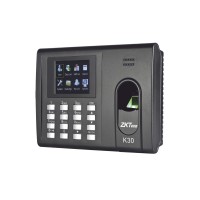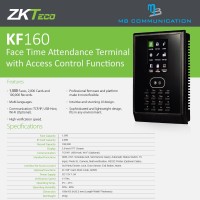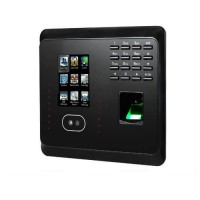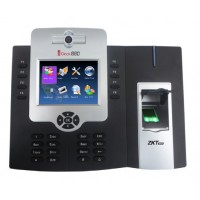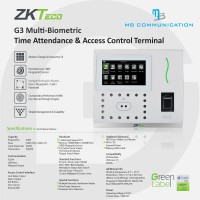No products
New products
-

BlackCopper BC-EGP-10G015-Z
Transform Your Business with BlackCopper BC-EGP-10G015-Z Dual Screen POS...
Rs 0
RFID Attendance System: A Comprehensive Guide for Streamlined Workforce Management
In today's rapidly evolving business landscape, efficiency and accuracy are paramount. Organizations are constantly seeking innovative solutions to streamline operations and optimize workforce management. One such solution gaining immense popularity is the RFID A...
RFID Attendance System: A Comprehensive Guide for Streamlined Workforce Management
In today's rapidly evolving business landscape, efficiency and accuracy are paramount. Organizations are constantly seeking innovative solutions to streamline operations and optimize workforce management. One such solution gaining immense popularity is the RFID Attendance System. This technology, powered by Radio Frequency Identification (RFID), revolutionizes the way employees clock in and out, providing numerous benefits that can significantly enhance your organization's productivity and security.
Understanding RFID Attendance Systems
RFID attendance systems leverage the power of RFID tags, small electronic devices containing a unique identifier, to track employee attendance. These tags are typically attached to employee ID cards or badges. When an employee enters or leaves the workplace, their RFID tag is scanned by a reader, capturing their entry and exit times.
Key Features of RFID Attendance Systems:
- Real-time Tracking: RFID readers provide instant data on employee attendance, eliminating delays in data processing.
- Enhanced Accuracy: RFID systems minimize manual errors, ensuring accurate recording of employee hours.
- Improved Security: The unique identifier on each RFID tag prevents unauthorized access and ensures only authorized personnel can clock in and out.
- Automated Timekeeping: RFID systems automate the entire timekeeping process, reducing the burden on HR departments and streamlining payroll calculations.
- Data Management: RFID systems store comprehensive employee attendance data, allowing for analysis and insights into workforce patterns.
- Integration Capabilities: RFID systems can seamlessly integrate with other HR software and systems, further streamlining processes.
Benefits of Implementing an RFID Attendance System
Adopting an RFID attendance system offers numerous advantages for businesses of all sizes. Here are some of the key benefits:
1. Increased Productivity:
By eliminating manual clock-in processes and reducing errors, RFID systems free up valuable time for employees and HR staff. Employees can focus on their core duties while HR can dedicate their efforts to strategic initiatives.
2. Reduced Costs:
RFID systems can significantly reduce the costs associated with manual timekeeping, such as overtime pay due to inaccurate tracking or administrative overhead. Automated data collection and processing streamline payroll calculations, resulting in cost savings.
3. Enhanced Security:
RFID systems enhance security by restricting unauthorized access to the workplace. Each employee's unique identifier prevents fraudulent clock-ins and ensures only authorized personnel are present. This is particularly valuable in industries where security is paramount, such as manufacturing, logistics, or healthcare.
4. Improved Employee Satisfaction:
By simplifying the attendance process and eliminating manual paperwork, RFID systems enhance employee satisfaction. Employees can easily track their own hours and avoid disputes over timekeeping.
5. Data-Driven Decision Making:
The comprehensive data collected by RFID systems provides valuable insights into workforce patterns, absenteeism rates, and employee productivity. This data can be used to make informed decisions regarding workforce planning, scheduling, and resource allocation.
Choosing the Right RFID Attendance System
Selecting the most appropriate RFID attendance system for your organization requires careful consideration. Factors to consider include:
1. Scalability:
Choose a system that can accommodate your current workforce size and has the potential to scale as your business grows.
2. Integration Capabilities:
Ensure the system integrates seamlessly with your existing HR software and other systems for optimal efficiency.
3. Security Features:
Consider the security features offered by different systems, such as access control, data encryption, and audit trails.
4. Budget:
Compare the costs of various RFID systems and choose one that fits your budget while offering the features you require.
Implementing an RFID Attendance System
Implementing an RFID attendance system involves several steps, including:
1. Planning:
Define your goals, requirements, and budget for the system.
2. Selection:
Research and select a suitable RFID attendance system that meets your needs.
3. Installation:
Install the system and configure it according to your specific requirements.
4. Training:
Train employees on how to use the system effectively.
5. Monitoring:
Regularly monitor the system to ensure its accuracy and efficiency.
Conclusion:
RFID attendance systems offer a cutting-edge solution for modern workforce management. By leveraging the power of RFID technology, organizations can streamline attendance tracking, enhance security, increase productivity, and gain valuable insights into their workforce. With its numerous benefits and ease of implementation, RFID attendance systems are becoming increasingly popular among businesses seeking to optimize their operations and improve their overall efficiency. MB Communication provides comprehensive solutions for a seamless transition to RFID attendance systems, supporting businesses in achieving their workforce management goals.
Rfid Attendance System There are 5 products.
-
-
ZKTeco KF160
KF160 is an innovative terminal for management employee attendance and basic access control functions.
Rs 26,900Out of stock -
ZKTeco MB360
MB360 is an innovative product featured with ZK advanced fingerprint and face recognition technologies.
Rs 26,900Out of stock -
-




